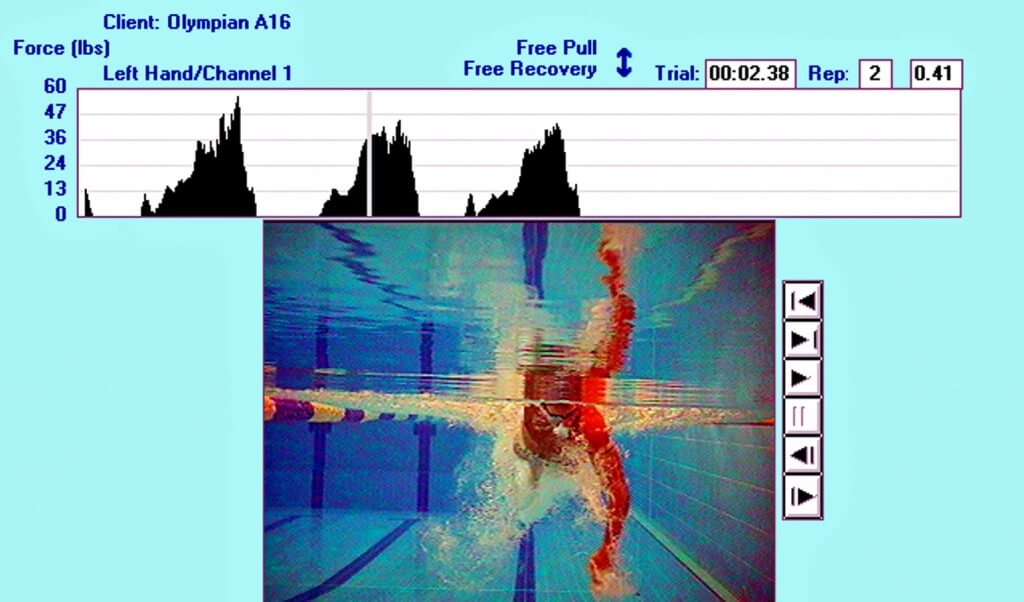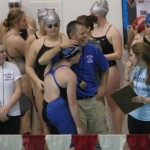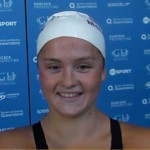Swimming Technique Misconception: Propulsion

Swimming Technique Misconception: Propulsion
A number of sources have stressed the importance of minimizing resistance to swim faster. An increase in propulsion may, however, be an even more important key to swimming faster. This article explains how one of the world’s fastest sprinters can adjust a critical technique limitation to increase propulsion and swim much faster.
By carefully examining the different stages of the freestyle pull and where the elbow is situated, Dr. Havriluk demonstrates that even an elite sprinter can make improvements to their technique that increase propulsion. To learn more about propulsion and how to adjust the elbow during the pull phase check out the October issue, available now!
Dr. Rod Havriluk is a sports scientist and consultant who specializes in swimming technique instruction and analysis. His unique strategies provide rapid improvement while avoiding injury. Learn more at the STR website, or contact Rod through info@swimmingtechnology.com.
Get your copy of the October 2015 Issue of Swimming World Magazine now!
Curious what else you will find in the October 2015 issue of Swimming World Magazine?
Check out the Inside Swimming World video:
Not a subscriber? Swimming World Magazine gives you unlimited access to all online content on SwimmingWorldMagazine.com and access to all of the back issues of Swimming World Magazine dating back to 1960! Purchase your Total Access Subscription TODAY!
FEATURES
009 NO WORRIES!
by Jeff Commings
Despite opinions to the contrary, Frank Busch, the national team director of USA Swimming, is confident that the Americans should continue their history of success at next year’s Olympics.
012 STUCK!
by Michael J. Stott
Older swimmers, seniors through Masters, address stagnant performance on a routine basis. But what about younger athletes? Swimming World asked some veteran coaches how they help 12-and-unders navigate the perils of age group plateaus.
014 “IT’S JUST SWIMMING…”
by Annie Grevers
Eighteen-year-old Katie McLaughlin shows that her laid-back approach to the sport she loves can breed some serious speed!
018 SUMMER TAKEAWAYS
by Jeff Commings
This summer’s meets offered us many refreshing details about the global state of swimming leading into the 2016 Olympics, mostly showing us that the world’s best are coming from virtually every corner of the globe.
026 COUNTING HER BLESSINGS
by Annie Grevers
October is National Breast Cancer Awareness Month, sponsored by the American Cancer Society. Swimmer Kayla Redig was diagnosed with breast cancer at the age of 24. Now 27, cancer survivor Kayla is helping countless others by sharing her own experiences through her blog, a documentary to be released next spring and through numerous articles that have been written about her.
COACHING
010 LESSONS WITH THE LEGENDS: BOB GILLETT
by Michael J. Stott
030 SWIMMING TECHNIQUE MISCONCEPTIONS: PROPULSION
by Rod Havriluk
A number of sources have stressed the importance of minimizing resistance to swim faster. An increase in propulsion may, however, be an even more important key to swimming faster. This article explains how one of the world’s fastest sprinters can adjust a critical technique limitation to increase propulsion and swim much faster.
042 Q&A WITH COACH JAMIE RUDISILL
by Michael J. Stott
043 HOW THEY TRAIN VICTOR POLYAKOV
by Michael J. Stott
JUNIOR SWIMMER
032 GOLDMINDS: 30 POINTS TO POP YOUR PERFORMANCE PLATEAU
by Wayne Goldsmith
045 UP & COMERS
COLUMNS & SPECIAL SECTIONS
008 A Voice for the Sport
021 HOLIDAY GIFT GUIDE
035 PREP SCHOOL DIRECTORY
046 Gutter Talk
048 Parting Shot










Jackie Beach
Hey. Yeh will have a read
thought it was relevant to what we were discussing last night
Link is not working
The link works now. Thanks for letting us know.
Gabby Burdess
why are so many swimmers now using straight arms on freestyle??
Lyn,
Really good question. It’s unfortunate that straight arm freestyle has become so popular. Check previous issues of Swimming World for info about the misconceptions of both a straight arm pull and a straight arm recovery.
Rod
Swimming Technology Research
http://www.swimmingworldmagazine.com/news/swimming-technique-misconception-freestyle-straight-arm-pull/
http://www.swimmingworldmagazine.com/news/freestyle-straight-arm-recovery/
When the arm is straightened it engages the scapula to utilize back and shoulder muscles; a bent arm-pull utilizes arm muscles (i.e. bicep, triceps, forearm), which are much smaller and less powerful, according to my experience and observation.
In addition, in the spirit of this article, a bent arm might cause more drag. Perhaps this is food for thought…
Ronald
The muscles that control the upper arm are similarly activated regardless of the angle at the elbow. The main difference is that there is much better leverage with elbow flexion, and therefore, more propulsion with the same muscular effort.
A straight arm is more likely to increase drag because of downward motion after the arm entry and upward motion at the end of the push.
Rod
using large muscles for sprint makes sense, but not for long races as lactic acid buildup would increase very quickly in anything over 20-40 sec.
Erich Richardson It depends on the level of exertion. If an athlete exerts themselves beyond the available oxygen supply, the activity becomes anaerobic and lactate will develop regardless of muscle group.
There may be an evolutionary theory as to why humans started to walk upright rather than on all-fours (i.e. if you believe the monkey-to-man theory). Gravity also plays a roll, as the smaller extremities (i.e. arms) may not have the vascular connection of the larger ones (i.e. legs). However, gravity may be less of a factor in water, in which the body functions in hypo-gravity (i.e. less than on-land gravitational forces). In any case , you are correct, the size of the muscle vs. lactate build-up must be considered.
Compare the size of leg muscles vs arm muscles; the best trained athletes can run for a longer time than anyone can do pushups. Legs are a larger muscle group, but it’s more about the vascular connection, how immediate is the blood supply?
The question is: Could the back and shoulder have a more immediate vascular connection than the arms? This is probably a question for Swimming Science.
The drag coefficient increases exponentially with propulsion. No human can create enough propulsion to overcome the drag created by sacrificing efficiency in order to do so. Consider terminal velocity.
For most swimmers, the drag coefficient is almost constant over the typical range of swimming velocity. The drag force, however, increases with the square of velocity.
A “terminal velocity” for swimming has not been accurately determined. Check the September issue of SW.
http://www.swimmingworldmagazine.com/news/maximum-velocity/
oh man….so many coaches….so many different ways to approach a stroke….AAARRRGGGHH!
Yes, there are so many different technique recommendations! Unfortunately, many are based on misconceptions. That’s why I am writing this series of articles.
The link just tells you to go buy the magazine, so don’t worry about it.
Haha..u are right…
James
The links go to previous issues of SW. If you have a subscription, you can access over 20 misconceptions articles.
Rod
Lacey Lorraine Radloff